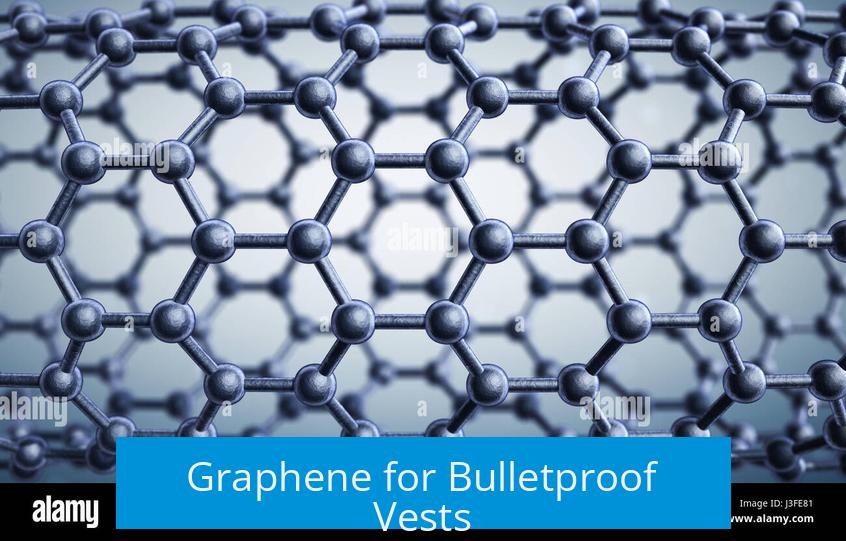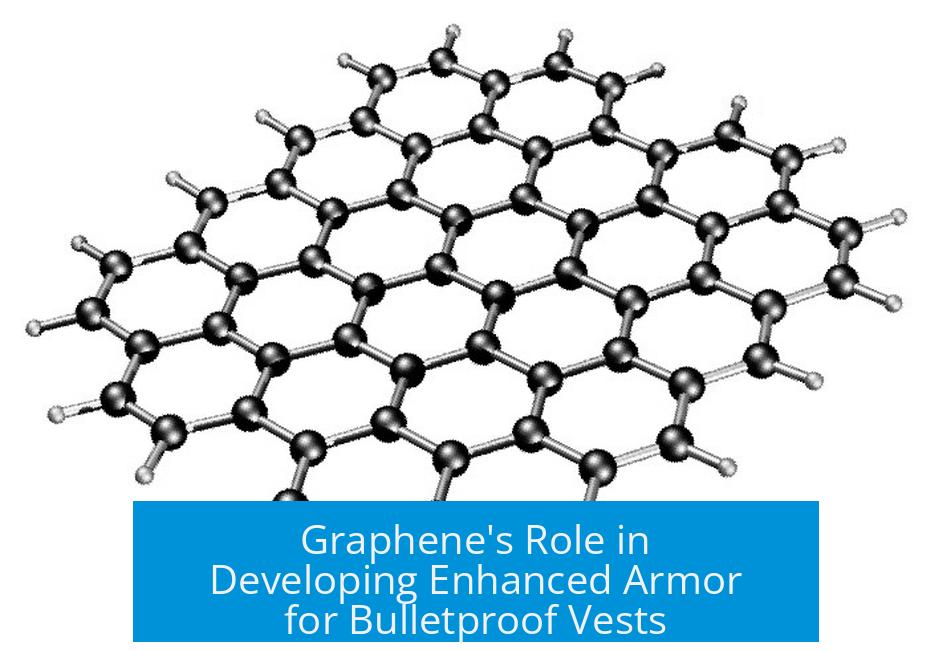Graphene for Bulletproof Vests?

Graphene alone cannot be used to make effective bulletproof vests due to its structural and mechanical limitations despite its remarkable strength-to-weight ratio. While graphene is incredibly strong for its weight, it cannot stop bullets effectively when used as a standalone material.
Why Graphene Isn’t Bulletproof
A single sheet of graphene supports only small loads, such as the weight of a small cat. This capacity is insufficient to absorb or dissipate the energy of a bullet impact. Increasing thickness by layering graphene sheets seems logical. However, the layers hold together weakly. They tend to slip and slide over one another under stress. This undermines the overall strength and prevents effective bullet resistance.
Atomic Structure Explains Graphene’s Strength
- Graphene consists of carbon atoms bonded to three nearest neighbors each.
- In contrast, diamond has carbon atoms bonded to four neighbors, resulting in a more rigid 3D structure.
- The “electron haze,” a cloud of delocalized electrons on graphene’s surface, binds carbon atoms tightly, giving graphene its strength and electrical conductivity.
Despite strong individual bonds, the two-dimensional nature and weak interlayer forces limit graphene’s practical use in high-impact protection.
Industry Progress and Graphene-Enhanced Armor
Some companies are exploring the integration of graphene with conventional materials. For instance, Citizen Armor claims to have developed ballistic protection using graphene composites. Others focus on graphene-enhanced Kevlar, which delivers improved performance that surpasses military specifications. These hybrid materials capitalize on graphene’s strength while overcoming its weaknesses.
No purely graphene-based bulletproof vests exist yet. The current innovation lies in composites where graphene reinforces traditional fibers.
Key Takeaways
- Graphene’s strength is high, but single or layered sheets fail to stop bullets effectively.
- Weak interlayer forces cause slippage in multi-layer graphene, limiting impact resistance.
- Graphene’s atomic bonding and electron cloud explain its unique strength and conductivity.
- Graphene-enhanced composites improve armor but pure graphene vests remain unrealized.
- Industry advances focus on hybrid materials combining graphene with Kevlar or other fibers.
Can a single sheet of graphene stop a bullet?
No. A single graphene sheet can support the weight of a small cat but cannot withstand the impact of a bullet.
Why can’t layering graphene create bulletproof material?
Graphene layers slip and slide over each other due to weak forces between them. This reduces the overall strength, making layered graphene ineffective for bulletproof use.
What makes graphene strong despite its limitations?
Graphene’s strength comes from carbon atoms bonded to three neighbors and a “skin” of delocalized electrons holding the sheet tightly. This structure gives it strength and conductivity.
Are there any graphene-based bulletproof vests available today?
Not fully graphene-based vests yet. Some companies, like Citizen Armor, claim to have methods, and graphene-enhanced Kevlar vests surpass military requirements.
How does graphene compare structurally to diamond in strength?
Diamond has carbon atoms bonded to four neighbors, making it very strong. Graphene has three neighbors but uses a delocalized electron “haze” for strength, which limits its protective applications.





Leave a Comment